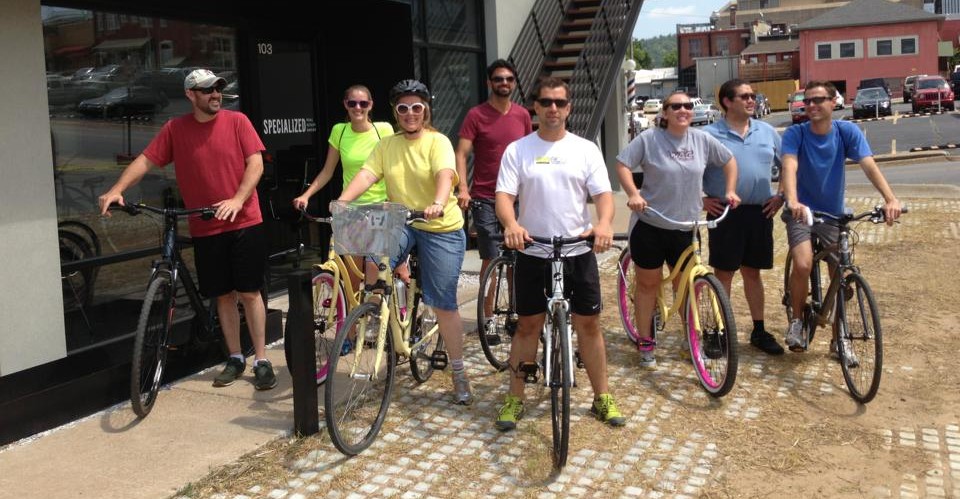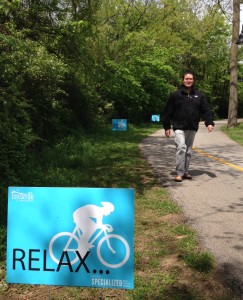
Building Healthy Places by Supporting Biking

Our Property Accountant, Oliver Moran, walks along the Razorback Greenway past the new trail safety and etiquette signs sponsored by Specialized.
With spring in the air, our thoughts turn to cycling. Biking is a big part of our culture around here, with our CEO leading the pack by biking to work. Since we opened our office in Downtown Fayetteville, our entire staff has participated in regular tours of all our properties by bike–that’s us in the photo above, preparing to embark. These tours are a great way to get out, spend time together as a team, and get fresh eyes on each of our projects.
The Grand Opening of the Razorback Greenway this Saturday, May 2 is a watershed for our community. The 36-mile route traverses two counties, creating unprecedented access for recreation and transportation. As part of the celebration, we are honored to sponsor bike safety and etiquette signage along the trail in partnership with the City of Fayetteville.
This spring we are taking it to the next level: National Bike Challenge is a competition running from May 1 to September 30, and we’ve challenged our entire team to take part. Our team will be tracking our miles, both recreational rides and commuting rides. You can follow our progress on the National Bike Challenge leaderboard as we challenge the architects and designers at Modus Studio. Better yet, join us! Sign up as an individual or a team
Urban Land Institute has released the Building Healthy Places Toolkit, exploring 21 evidence-based recommendations for improving public health through land use practices. Today’s post is the first in our series highlighting the Building Healthy Places recommendations, examining our current properties and practices, and identifying ways that we can push ourselves to create more healthy communities.
Building Healthy Places Recommendation #4 Provide Infrastructure to Support Biking
HOW TRANSPORTATION INFRASTRUCTURE IS DESIGNED determines how extensively active transportation options such as walking and biking are used. In communities that are designed to prioritize pedestrians, walking is a reliable mode of transportation with demonstrated health benefits. Biking is a great form of exercise, emission free, and one of the most efficient forms of transportation available—particularly for shorter trips under two miles. Bike lanes support real and perceived safety for all street users. Several studies have shown a positive association between bicycle lanes and levels of bicycling.
—Building Healthy Places Toolkit: Strategies for Enhancing Health in the Built Environment, Urban Land Institute, 2015

